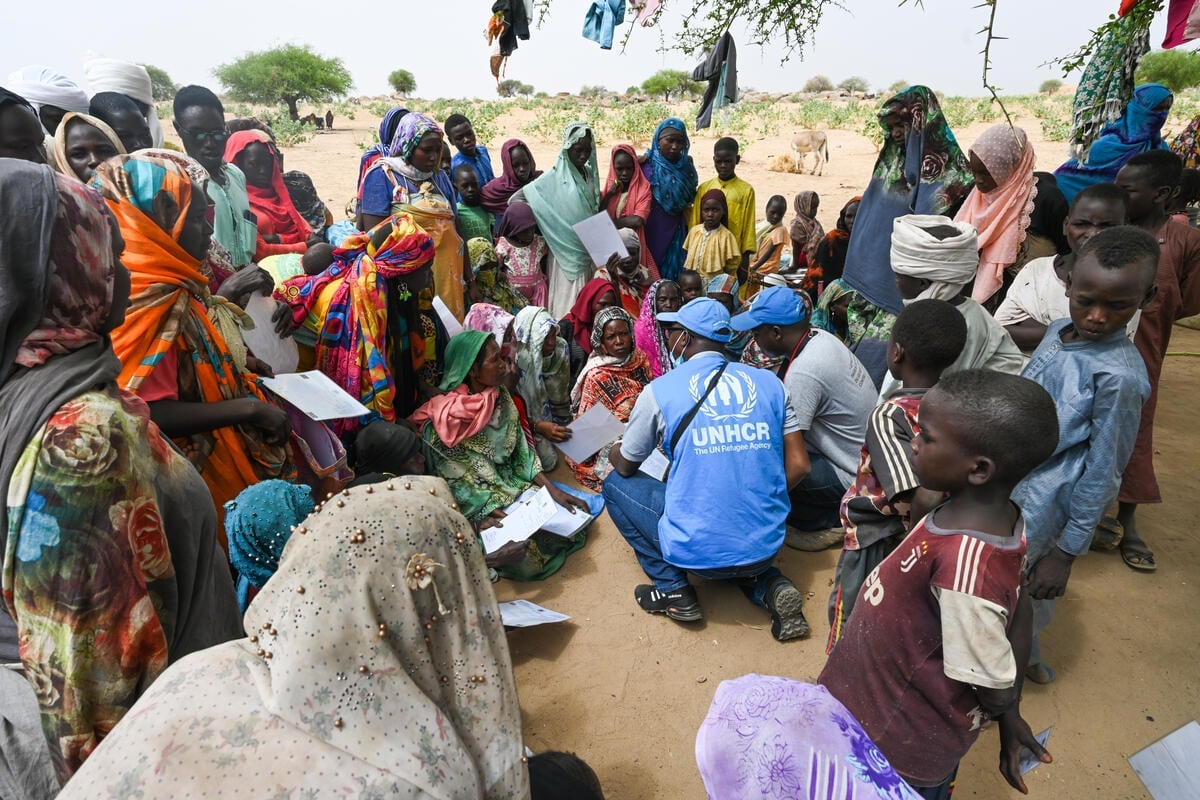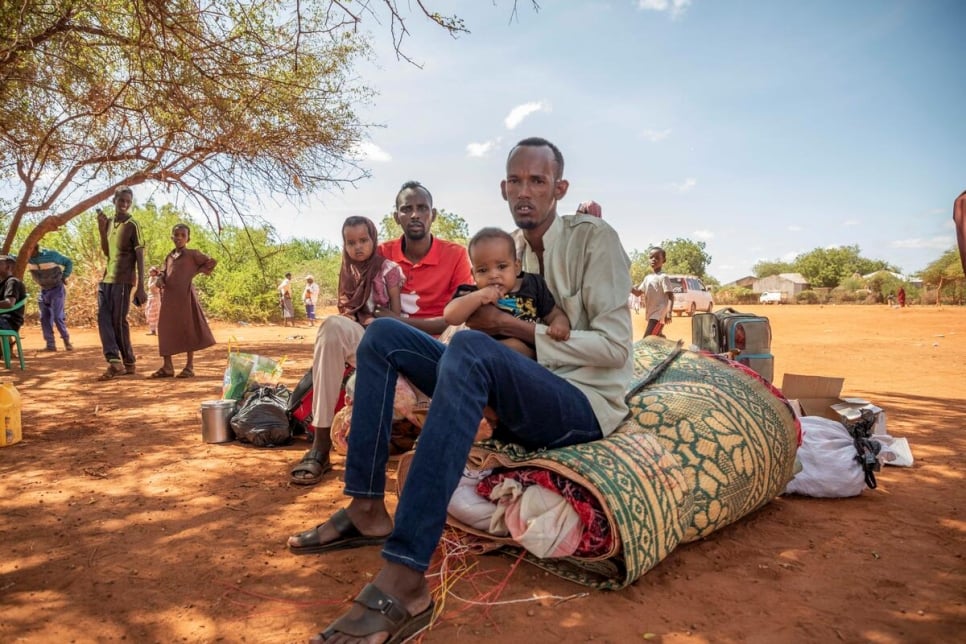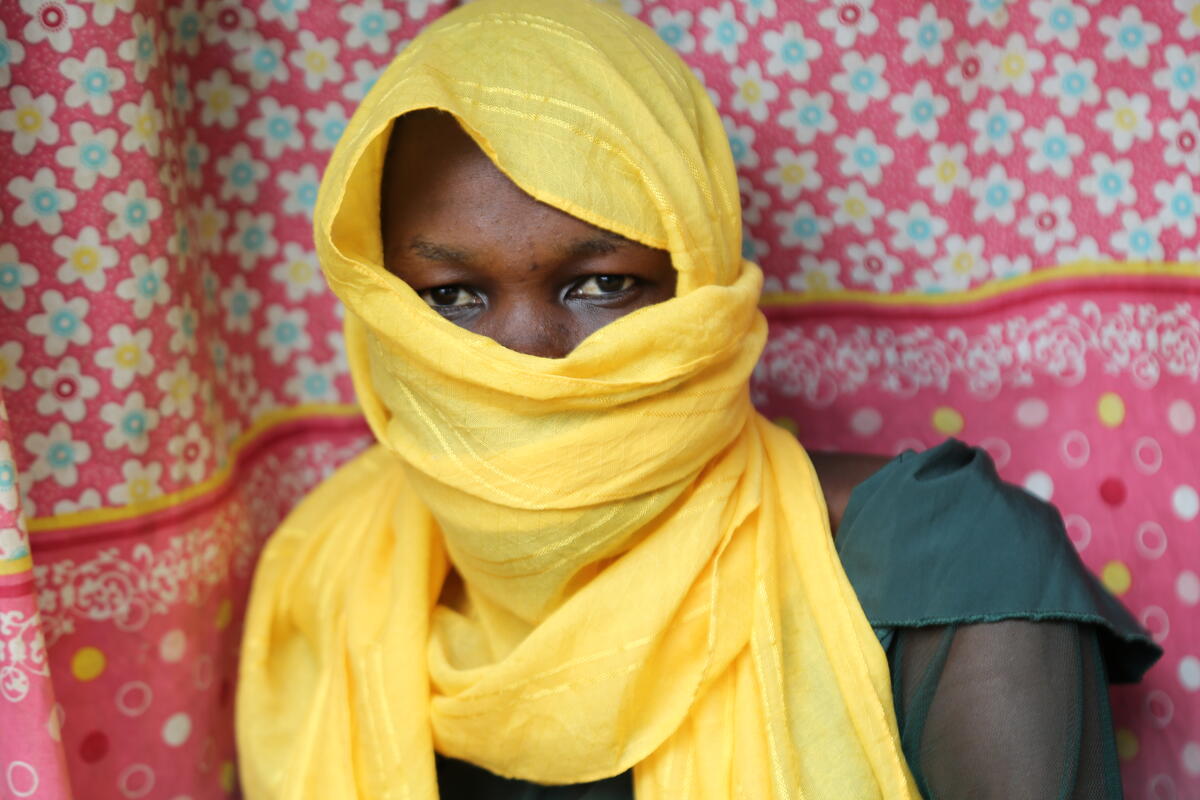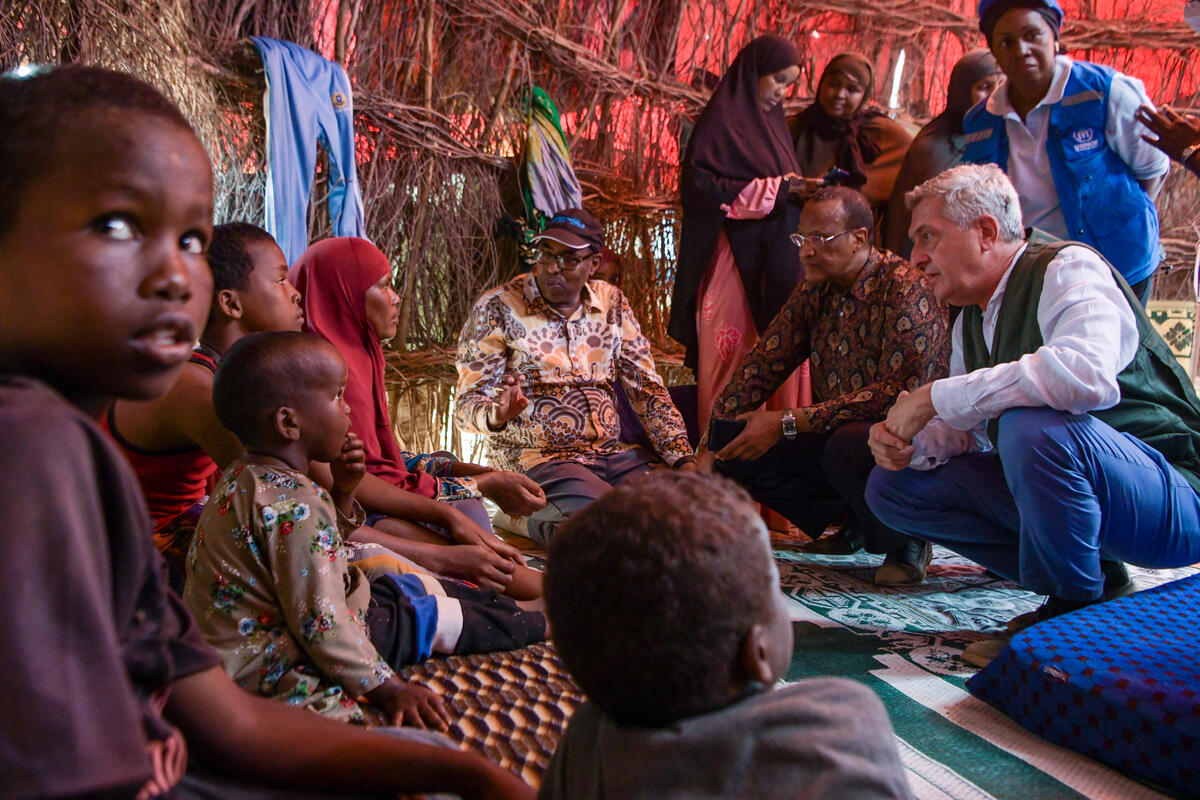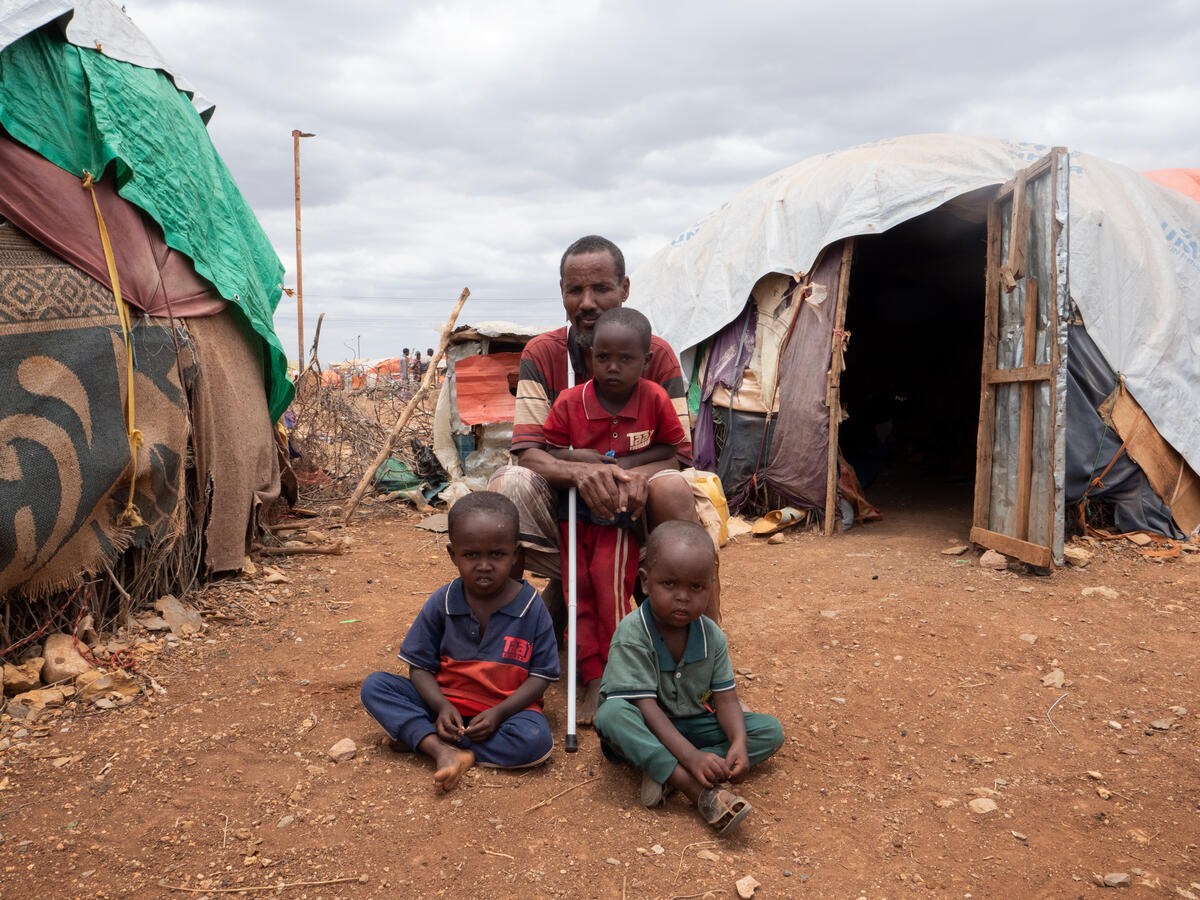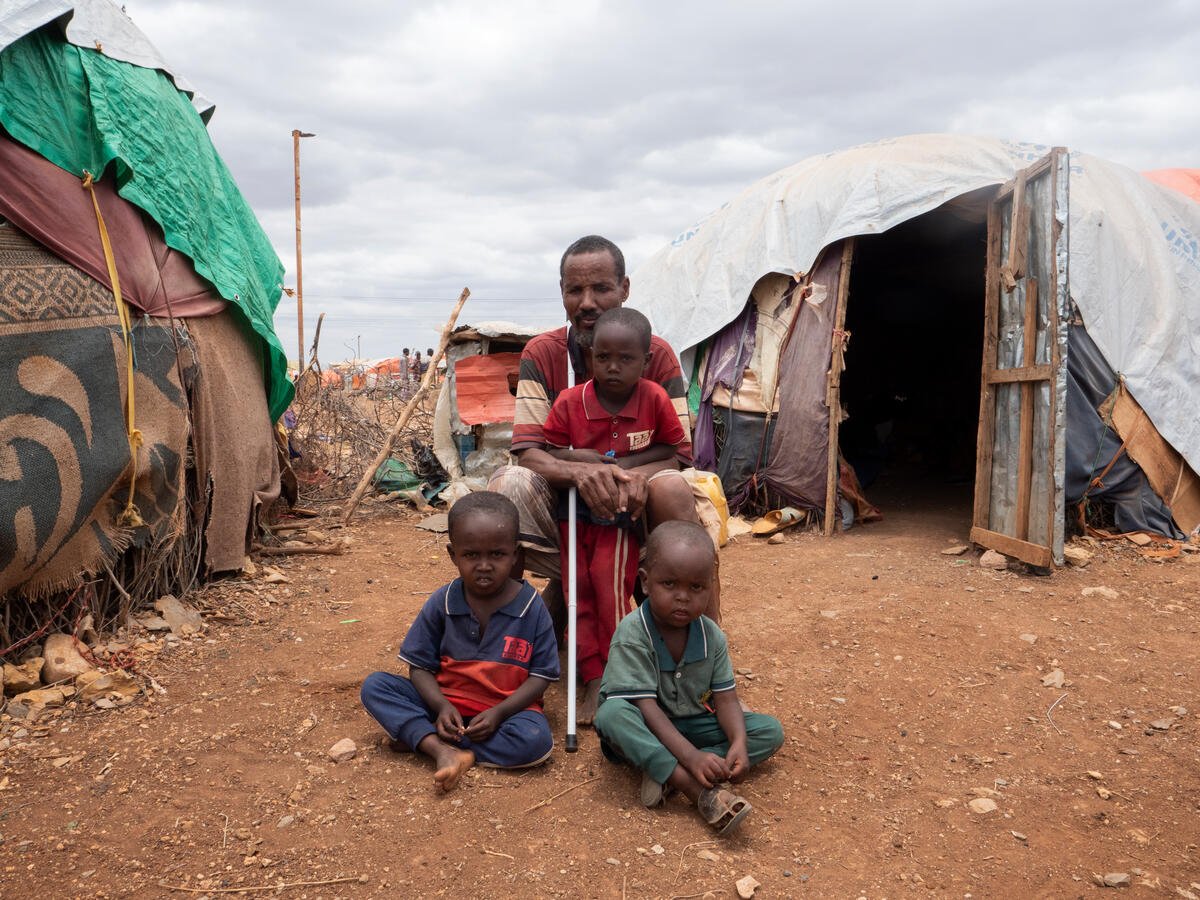Drought brings life-threatening food shortages for refugees in Ethiopia
Drought brings life-threatening food shortages for refugees in Ethiopia

A woman who fled to Melkadida in Ethiopia to escape starvation in her home village in Hawal Haji district, stands near the carcasses of her dead goats.
Samira Abdi fixes worried eyes on her six-year-old son as a nurse lays him gently in a weighing basin at a nutrition centre in the Melkadida refugee camp in Ethiopia’s eastern Somali region. Samira brought him and another of her children here after they suffered weeks of stomach pains, but she already knows what torments them: hunger.
“They have not been eating because we don’t have enough food,” Samira said. “I noticed they were losing weight, so I came here to get some help.”
The 28-year-old came to the centre a month earlier with all five of her children, all showing the same symptoms. Diagnosed with malnutrition, they were immediately put on a treatment regime that involves being given a high-nutrient supplement and treating related infections. However, only three of her children have recovered.
Eleven years ago, conflict forced Samira to flee her home in southern Somalia and she became one of the first refugees at Melkadida, which is now home to over 41,000 people. Today, she finds herself on another frontline.
All I can think about is how I'm going to feed them.
Drought and ration cuts mean keeping her children from going hungry is a relentless battle. Last year, the monthly food package she receives from the World Food Programme as a camp resident was reduced by half due to funding challenges. With no steady source of income, she is unable to supplement their diet with food bought from the market.
“Previously, the food we received was enough to carry us through the month. But nine months ago, the amounts reduced, and I started to worry,” said Samira.
Then her children fell sick. “All I think about is how I’m going to feed them,” she said. “Last night, they did not eat. This morning, I gave them some porridge. I have nothing more to give them.”
Since 2019, five consecutive failed rainy seasons across the Horn of Africa have created a devastating drought that has affected millions of people in the region. Water sources have dried up, crops and livestock have been decimated, and people’s capacities to support themselves have been eroded. Compounding the hardship, food prices have rocketed, partly as a result of the war in Ukraine, making it too expensive for most refugees and local communities to afford even basics.
The inevitable result is rising malnutrition rates, particularly among women and children who often bear the brunt of food shortages.
Ethiopia’s Somali region is one of the hardest hit. Hosting some 205,000 refugees, mainly from Somalia, living in eight camps, as well as nearly 650,000 internally displaced people, the region is struggling to feed itself.
Adane Tefera is an associate nutrition officer for UNHCR, the UN Refugee Agency, and has seen first-hand the impact that the dire food crisis is having on vulnerable families such as Samira’s.
“The cost of food has increased by 67 per cent, according to our last assessment. Even the most basic food item, milk, has more than doubled in price,” he said. “As most refugees can no longer afford to buy food from the markets, they are finding it very difficult to get enough to eat, which puts them at risk of malnutrition and other serious diseases.”
Dahira Mohamed, 50, runs a small vegetable shop in Melkadida’s main market, but lately business has been tough as sales have fallen.
“Recently, I bought half a sack of tomatoes on credit from my neighbour so that I can sell, and my children can have something to eat,” said the mother of five. “But I have only been able to sell tomatoes worth 30 Ethiopian Birr ($0.60), not enough even to buy a packet of maize flour.”
UNHCR is working with regional authorities and NGO partners to provide aid. Cash assistance for the most vulnerable refugee families helps them buy food, while shelter materials, basic household items, and trucked in water help both refugees and host communities.
Humanitarian assistance is a critical lifeline, but funding shortfalls have left thousands of drought-affected refugees and host communities across Ethiopia on the brink of disaster. Last year, a UNHCR appeal for $42.6 million to provide emergency support to 1.5 million people affected by the drought in Ethiopia, Kenya, and Somalia was only half funded. Although some additional funding at the end of the year helped restore food rations to 80 per cent, a shortage of funding is still having an impact, including on the provision of nutritional support.
This year, as the crisis has deepened, an estimated US$46 million is needed to meet the needs of drought-affected refugees and internally displaced people in Ethiopia alone.
“We know that the global environment right now is challenging, that donors are preoccupied with other urgent needs, but the situation needs urgent attention,” said Adane.
As the drought is expected to continue, more needs to be done to ensure that refugees and local communities can meet their needs more sustainably. In addition to providing life-saving assistance, UNHCR is supporting income-generating activities so they can supplement their needs and rely on themselves. Through climate-smart agriculture, families will also be supported to adopt ways of producing food that are adapted to climate change.
For Samira, a little extra help may be all she needs to turn her situation around.
“If I got some support, for example to start a business, I could make some money to buy some rice, pasta or sugar for my children,” she said.


